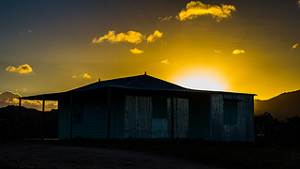
Source: Sun sets in heaven, IAmNotUnique, Flickr
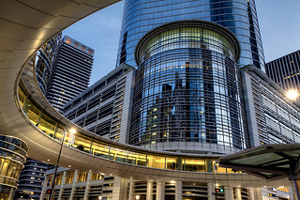
Source: 20120211-Houston architecture the halo-073a, Alfedo Mora, Flickr
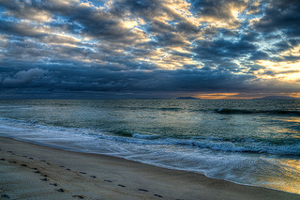
Source: Walk on the mild side, Wendell, Flickr

Source: 1582.Oak.3.KI2, BjBEvanston, Flickr
In the first section of this lesson you saw how one aspect of the setting in a story, the physical location of the action in a story, (the where of the story) influences the plot of the story (the what of the story). Other aspects of the setting to consider when you investigate the setting of a story are the time when the action takes place and even the weather or the surroundings of a specific place.
Look at the chart below to help you understand how these components might play a part in the plot of a story.
Setting (Place)
| Where (large scale) | Where (small scale) | Weather or conditions that might affect the plot | Time of day or day of the year (small scale) or time in history (large scale) |
|---|---|---|---|
| Planet | School | Calm | Government (the Kennedy administration, the reign of Elizabeth I) |
| Country | Store/mall/park | Storm | Political unrest (the Civil Rights Movement) |
| State | House/apartment | Extreme weather | War/peace (The Civil War, the 1950s ) |
| Town/city | Room(s) | Rugged conditions | May 5, 1954 |
| Ocean | Ship/boat/car | Ambience in a room or place | Yesterday |
| Wilderness | Neighborhood | Temperature | Halloween |
 To help make the information in the chart above come to life for you, here are a few examples from literature in which setting plays a significant role in what takes place in the story. After you read through these, see if you can recall some of your own readings that might illustrate examples of these settings. Use your notes to record your examples. Note that some works of literature use several different places for their settings that together help bring the action to life for the reader. When you are finished, you can click on the Check Your Understanding to see a few more possibilities.
To help make the information in the chart above come to life for you, here are a few examples from literature in which setting plays a significant role in what takes place in the story. After you read through these, see if you can recall some of your own readings that might illustrate examples of these settings. Use your notes to record your examples. Note that some works of literature use several different places for their settings that together help bring the action to life for the reader. When you are finished, you can click on the Check Your Understanding to see a few more possibilities. | Where (large scale) | Where (small scale) | Weather | Time (large scale) |
|---|---|---|---|
| Treasure Island, by Robert Louis Stevenson, takes place on an island where the characters have to cope with various elements of nature to survive. | The Diary of Anne Frank, by Anne Frank, takes place in a single small apartment where the main character has to fight fear and isolation to survive. | The Call of the Wild, by Jack London, takes place in the frigid tundra of Alaska where the main character has to deal with snow, wind, and cold. | To Kill a Mockingbird, by Harper Lee, takes place in the South at a time when racial bigotry was common and where the characters had to fight prejudice in their lives. |
| Moby Dick, by Herman Melville, takes place on the open sea where the main character battles a killer whale. | The Secret Garden, by Frances Hodgson Burnett, takes place in a large gloomy house as well as in a neglected walled-in garden. | Moby Dick, by Herman Melville, takes place on the open sea where the main character battles a killer whale in the midst of stormy ocean weather. | The Diary of Anne Frank, by Anne Frank, takes place in war-torn Europe where the characters have to hide from their Nazi captors. |
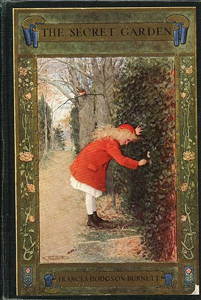
Source: The Secret Garden book cover - Project Gutenberg eText 17396, Wikimedia
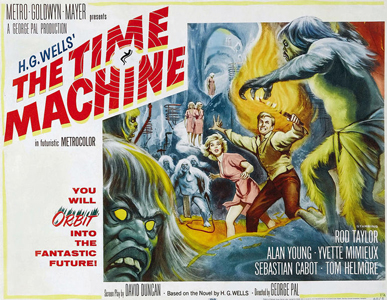
Source: Brown,r time macine60, film poster, Wikimedia
| Geographical (large scale) | Geographical (small scale) | Weather | Time (small scale) | Time (large scale) |
|---|---|---|---|---|
| A Wrinkle in Time, by Madeline L’Engle, takes place on Earth and Camazotz, a faraway planet | The Pigman, by Paul Zindel, takes place in a neighborhood on Staten Island in New York. | Hatchet, by Gary Paulsen, takes place in the woods where Brian must try to survive in the outdoors. | The Harry Potter series, by J.K. Rowling, takes place over a few years during the last years of the 20th century. | The Time Machine, by H. G. Wells, takes place in different centuries. |
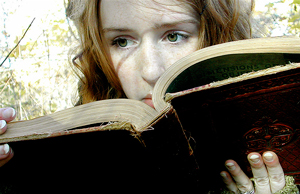
Source: She read for three days, Jessica, Flickr
You know that plot is what happens in a story and that setting is when and where it takes place. You also know that in real life, the setting is the time and place in which we live, and the plot is what happens in our lives. Now let’s use a few examples from literary texts to see how authors set their stories and how their choices of settings influence plot.
Authors use various methods to communicate setting. One technique is by using sensory language. As shown in the example below, Robert Louis Stevenson uses this approach in his book Treasure Island, in which he describes the scene (the location of the setting) on the island. Click on the highlighted text to see how you might use textual evidence to explain Stevenson's uses sensory language to place his story on a hot and humid ocean island.

In this passage, you can see and hear what the author sees and hears. That’s the mark of a good author. In the next passage, Stevenson again uses imagery and descriptive language to connect his setting with the plot of his story. Click on the highlighted passages to view a possible explanation of the author's use of language to describe the setting.

As you can see in this passage, Stevenson uses certain elements of the setting, for example, the sights and sounds of the crashing surf, as the motivation for his character to choose a different course. The character decides not to venture near, ultimately choosing to go a different way to get where he needs to go. In this way, the setting (the crashing surf) influences the plot of the story.
Setting and plot events
Earlier in the lesson, you looked at how a writer creates the setting of a story through sensory details—sight, sound, smell, touch, and taste. You also observed how the setting in a story influences the plot. Chances are that in certain situations you have raised your voice, perhaps trying to get the attention of a friend who is a little distance away. You wouldn’t hesitate to do this on the playground or at an outdoor event, but would you be comfortable doing this same thing if the setting were in a church, or a bank, or in the middle of school concert? Hopefully not! These situations are examples of how the setting can affect the action that takes place in that particular setting.
One place you can see the junction of setting and plot is in the conflict of a story. As you know, conflict is a necessary part of any good story. You know that many kinds of conflicts exist, including the following:
- Man vs. man
- Man vs. self
- Man vs. nature
- Man vs. society
Authors use the setting to directly influence the events in the plot depending on which kind of conflict they have in mind. Let’s look at a small excerpt from Gary Paulsen’s Winterdance: The Fine Madness of Running the Iditarod that tells about his experience training sled dogs to run the Iditarod, a famous dog sled race in Alaska. In this excerpt he’s talking about how he ignored the signs that a giant winter storm was approaching as he trained his dogs in the bitter, cold Alaskan winter wilderness.
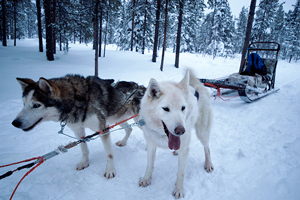
Source: Dog sledding, Lars Bergstrom, Flickr
They tried-the dogs, the trees, the wind. When I stopped to check dog feet and work in ointment a big, white, slab-sided dog named Crackers started fidgeting, smelling the breeze that was now and then gusting into wind. I didn’t understand it, didn’t see it for the warning it was.
Flakes of snow-not large and fluffy but small and mean, driven-started to appear. They were a sign of weather coming, as was Cracker’s restlessness, but I ignored the snow as well, finished working on their feet, and called the dogs up as soon as I finished.
The wind was increasing exponentially and the sleet had increased as well.
Paulsen writes about ignoring the warning signs until it’s too late and realizing how lucky he and the dogs were to escape with their lives. Paulsen uses the brutal conditions and the Alaska setting to move the plot to a showdown between himself and nature. The conflict might have been more difficult to manufacture had the setting been a pleasantly heated home in Anchorage.
Let’s look at one more example of how the setting is key to establishing the conflict. Here’s an excerpt from Fahrenheit 451, a novel by Ray Bradbury. He writes about an incident in the future when a fireman’s job is to burn books rather than to save people, houses, and objects from burning.
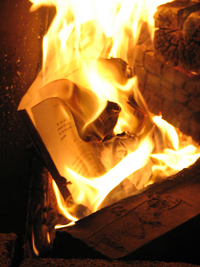
Source: Burn, baby, burn, pcorreia, Flickr
Do you mind if I ask? How long have you worked at being a fireman?"
"Since I was twenty, ten years ago."
"Do you ever read any of the books you burn?"
He laughed. "That's against the law!"
"Oh. Of course."
"It's fine work. Monday burn Millay, Wednesday Whitman, Friday Faulkner, burn 'em to ashes, then burn the ashes. That's our official slogan."
They walked still further and the girl said, "Is it true that long ago firemen put fires out instead of going to start them?"
"No. Houses have always been fireproof, take my word for it."
"Strange. I heard once that a long time ago houses used to burn by accident and they needed firemen to stop the flames."
He laughed.
As you can see, the author uses the setting, the future in a world that’s not very familiar to us and not very pleasant, to set up the conflict that begins as the fireman is being questioned about his job to burn books.